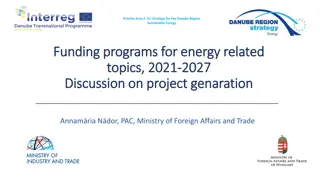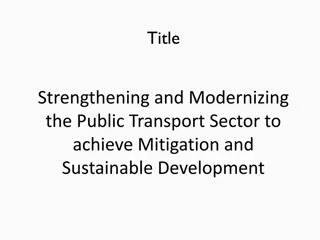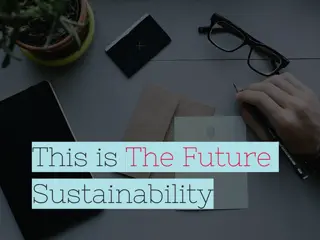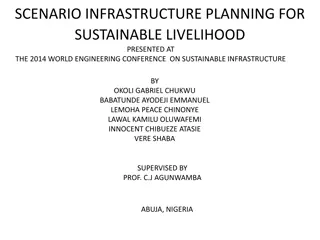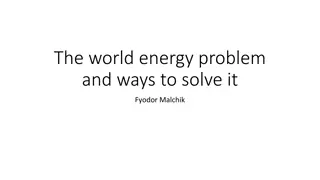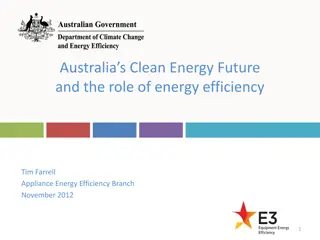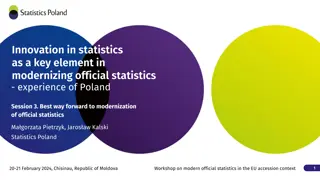Modernizing Energy Infrastructure for a Sustainable Future
In the current initiative spanning 2024-2028, significant advancements are planned in the deployment of advanced metering infrastructure, grid automation, integrated system planning, data analytics for clean energy, and market services. These activities aim to enhance grid visibility, operational capabilities, customer management, and support for clean energy initiatives. The transition towards a more efficient and sustainable energy ecosystem involves the complete deployment of advanced meters, automation of grid devices, integration of distributed energy resources, and the development of innovative market services.
Download Presentation

Please find below an Image/Link to download the presentation.
The content on the website is provided AS IS for your information and personal use only. It may not be sold, licensed, or shared on other websites without obtaining consent from the author.If you encounter any issues during the download, it is possible that the publisher has removed the file from their server.
You are allowed to download the files provided on this website for personal or commercial use, subject to the condition that they are used lawfully. All files are the property of their respective owners.
The content on the website is provided AS IS for your information and personal use only. It may not be sold, licensed, or shared on other websites without obtaining consent from the author.
E N D
Presentation Transcript
Platform Technologies are categorized and described with six main elements
Initiative 2024-2028 DSIP Period High-Level Activities Advanced Metering Infrastructure Complete deployment of advanced meters and communications. Grid Automation and Management Continue implementing grid automation programs (grid devices) and control center applications (ADMS and DERMS). Continue developing ISP functionality be evolving hosting capacity maps, improved process automation, and streamlined data exchange with customers and third parties. Integrated System Planning (ISP) Develop use cases and provide data to the Integrated Energy Data Resource (IEDR) platform and complete the Grid Model Enhancement Project (GMEP). Data and Analytics Clean Energy and Decarbonization Identify energy storage opportunities for T&D applications, complete EV make ready investments, and complete NY-required clean energy targets. Continue coordination with NYISO on DER/market aggregation; support DER integration and beneficial electrification with time-varying rates. Market Services and Customer Innovations
Advanced Metering Infrastructure Advanced meters plus communications infrastructure provide granular customer consumption data that: Can be used to develop granular load profiles and forecasts Help customers manage their energy usage Provide grid operators with grid-edge visibility and advanced operational capabilities Overview 1) 2) 3) 4) Customer data and billing Analytics Outage notification Grid automation Capabilities Completed by the end of 2023: 24% of meter installations Internal meter data management system (MDMS) for customer usage data Updated billing system to support new rate structures Distributed Intelligence suite purchased for analytics The smart meter deployment will be complete by the end of 2025, which will enable sub-hourly consumption data, near-real-time outage notification, and time-varying rates for all customers Key Activities
Grid Automation and Management Automated grid devices and management technologies that provide the Energy Control Center (ECC) with visibility and decision support to make adjustments to the distribution system to support resiliency, reliability, power quality, DER integration, and other outcomes and, with the implementation of an ADMS, optimize grid assets, and DER. Overview Grid Automation Progress through DSIP Period 1) Control center systems (ADMS) and grid optimization Grid automation (devices) DER management (DERMS) Capabilities 2) 3) ADMS to be complete in 2026-2027 Grid automation programs to be completed over 10-15 years, with the Lines Sensors program completed in 2027 for feeder load shapes Long-term DERMS to be completed after 2028 Key Activities
Integrated System Planning A holistic and inclusive planning process that reduces cost, improves efficiency, and achieves societal clean energy targets. Overview 1) 2) 3) 4) Advanced forecasting Non-wires alternatives (NWAs) and beneficial locations Hosting capacity Interconnections Capabilities Complete Stage 4.0 hosting capacity maps, including higher refresh rates through process automation. Streamline DER interconnections for DERs and electrification through process automation. Select advanced forecasting tools to be used to create 8,760 load shapes when data becomes available (post-2025 with completion of AMI, GMEP, and Line Sensors Program). Key Activities
Clean Energy and Decarbonization Investing in grid infrastructure that will increase deployment of renewables, clean DERs, and beneficial electrification to meet state clean energy and decarbonization goals. Overview 1) 2) 3) 4) 5) Electric vehicles Energy storage Clean heat and building electrification Energy efficiency Smart inverters Capabilities Complete Light-Duty EV Make Ready Program investments by 2025 to achieve our EV Roadmap goals. Identify energy storage solutions for T&D applications. Complete energy efficiency and clean heat targets by 2025. Implement grid support smart inverter settings in 2023, and submit final smart inverter settings recommendations to the Commission by 2025. Key Activities
Market Services and Customer Innovations Connect customers to pricing options and programs, as well as to products and services offered by competitive suppliers; and Implementing incentive programs that support market transformation. Overview 1) Billing system automation and compensation DER aggregation for market access Rate design Capabilities 2) 3) Coordinate with NYISO on DER aggregation with a market launch in 2023 and incorporation of FERC Order 2222 market requirements in 2026. Support DER integration and beneficial electrification with time-varying rates for electrification and DERs using data and information from smart meters and GMEP. Key Activities











